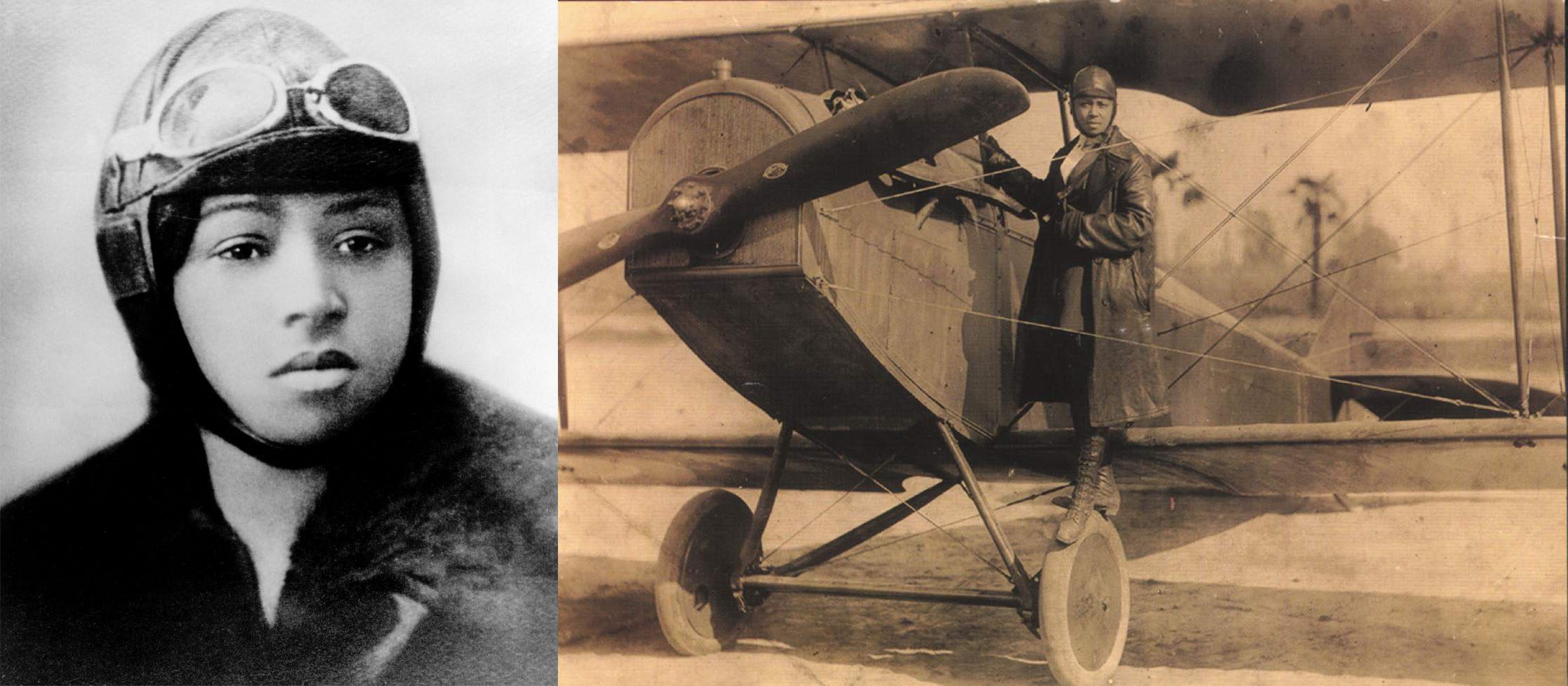
From left: Portrait of Bessie Coleman, pilot, c. 1921. CHM, ICHi-026774. Bessie Coleman on the wheel of a Curtiss JN-4 “Jennie” in her custom-designed flying suit, c. 1924. NASM 92-13721, Smithsonian Institution.
On January 26, 1892, Bessie Coleman was born in Atlanta, Texas. She was the first Black woman in the world to earn an aviator’s license.
A daughter of George and Susan Coleman, Bessie Coleman was one of thirteen children. During her youth, a number of aviation milestones may have influenced her: in 1903, the Wright brothers made the first controlled, sustained flight of a powered heavier-than-air aircraft; in 1910, Baroness Raymonde de la Roche became the first woman to earn a pilot’s license; in 1911, Harriet Quimby became the first American woman to earn a pilot’s license; and in 1917, Eugene Jacques Bullard became the first African American military pilot to fly in combat, and the only African American pilot in World War I, albeit for France.
Like many other African Americans in the early twentieth century, Coleman decided to seek better opportunities in the North. She moved to Chicago in 1915 and lived with two of her brothers on the South Side. Both of them had fought overseas during World War I and most likely encouraged her dream of becoming a pilot. However, she faced prejudice both as a woman and an African American and found herself unable to train in the United States.
With the encouragement of Robert S. Abbott, publisher of the Chicago Defender, Coleman learned French and saved up money from her work, first as a manicurist and then a manager of a chili parlor. In November 1920, she gained entrance into the Caudron School of Aviation in Le Crotoy, France. On June 15, 1921, Coleman obtained her pilot’s license from the Fédération Aéronautique Internationale, and after some additional training in Paris, she returned to the United States in September 1921.
Upon her return, Coleman became a barnstormer with the Chicago Defender as her sponsor and toured the United States. On October 15, 1922, more than 2,000 people came to the Checkerboard Field in west suburban Maywood (now Miller Meadow Forest Preserve) for her first exhibition in Chicago. Coleman died in a plane crash in Florida in 1926.
Inspired by Bessie Coleman, a group of African American pilots organized the Challenger Air Pilots Association in 1931. The organization founded an airport in south suburban Robbins in 1933 to accommodate the needs of African American pilots who faced discrimination at other Chicago airports.
Learn more about Chicago’s airports in our Encyclopedia of Chicago entry.
Studs Terkel Radio Archive
Studs Terkel talked to the twentieth century’s most fascinating people in his forty-five years on WFMT radio, from notable experts and award-winning performers to ordinary folks and everyday citizens. In 1981, he spoke with air traffic controller Jim Paulei about what a day on the job looks like and the Professional Air Traffic Controllers Organization (PATCO) strike.